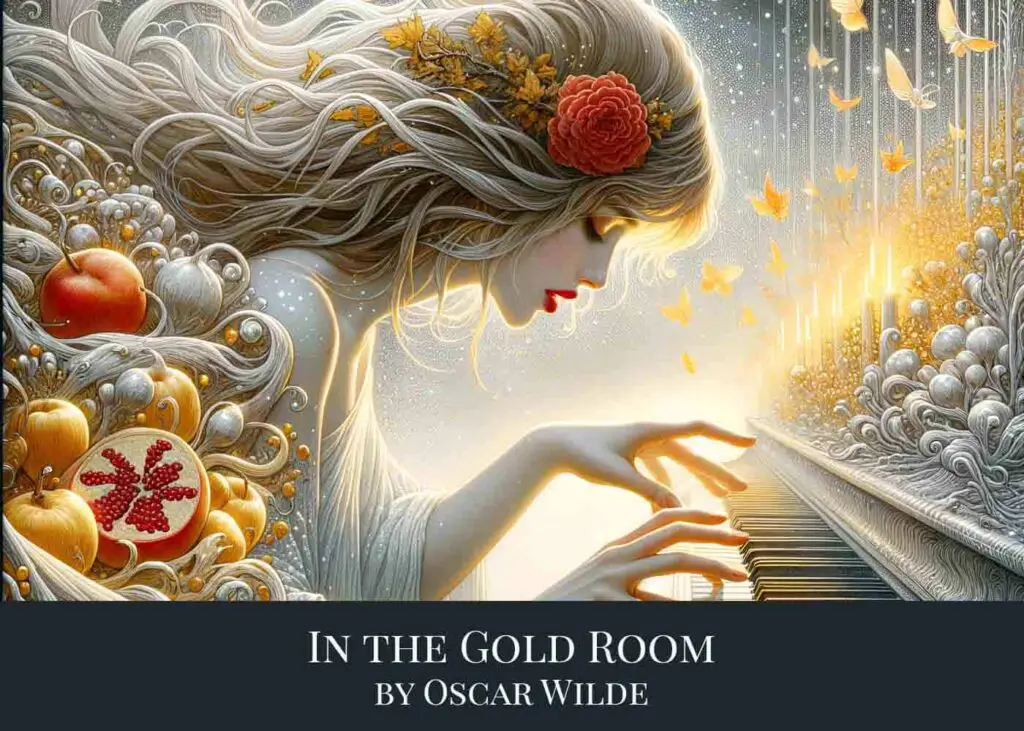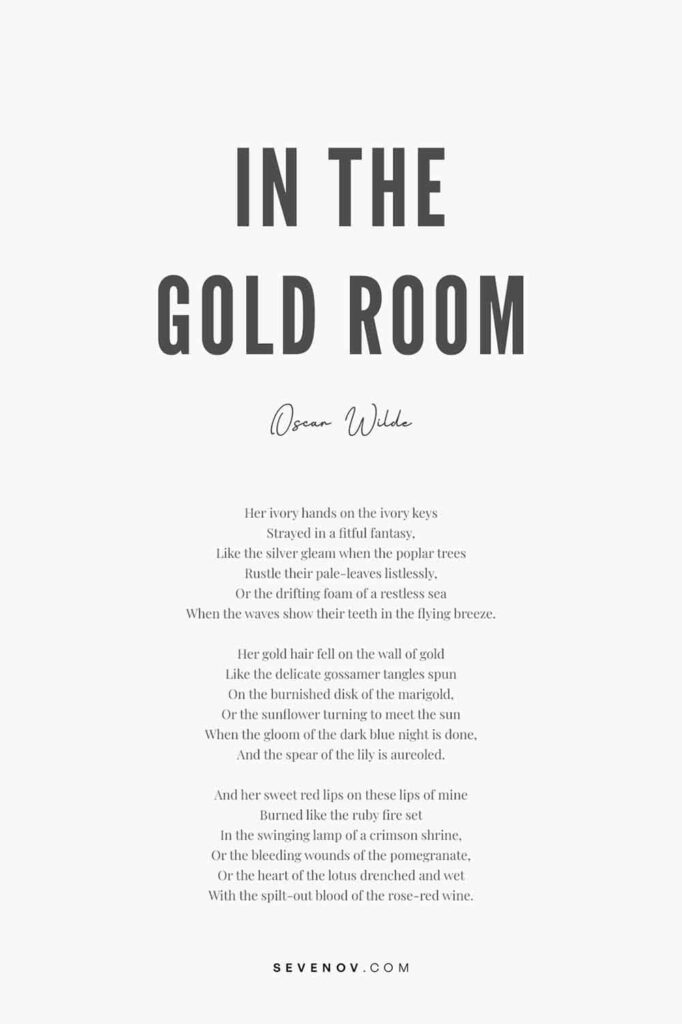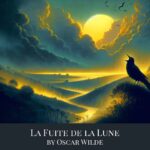
In the Gold Room by Oscar Wilde
“In the Gold Room” is a poem by dramatist and poet Oscar Wilde, part of Wilde’s first poetry collection Poems. In this particular piece, Wilde masterfully weaves a tapestry of visuals using elements like ivory keys, gold hair, and the natural world, to portray a scene of profound beauty and emotion. For those interested in exploring more of Wilde’s poetic work, Poems online book is available at PageVio.
1. The Poem
Her ivory hands on the ivory keys
Strayed in a fitful fantasy,
Like the silver gleam when the poplar trees
Rustle their pale-leaves listlessly,
Or the drifting foam of a restless sea
When the waves show their teeth in the flying breeze.
Her gold hair fell on the wall of gold
Like the delicate gossamer tangles spun
On the burnished disk of the marigold,
Or the sunflower turning to meet the sun
When the gloom of the dark blue night is done,
And the spear of the lily is aureoled.
And her sweet red lips on these lips of mine
Burned like the ruby fire set
In the swinging lamp of a crimson shrine,
Or the bleeding wounds of the pomegranate,
Or the heart of the lotus drenched and wet
With the spilt-out blood of the rose-red wine.

Download In the Gold Room Poster
Size: 8″ x 12″ (2:3 ratio)
Format: PDF
Copyright information: For personal use only
Note: Actual poster background color is white. For the sample poster, the background is made gray for illustration purpose.
2. In the Gold Room Analysis
“In the Gold Room” is rich in vivid imagery and metaphor, using detailed comparisons to describe a scene involving a woman playing the piano and a romantic encounter. Let’s break it down stanza by stanza:
1. The first stanza creates a picture of a woman’s hands moving over piano keys. The comparison of her ivory hands to the ivory keys suggests a kind of harmony or unity. Her playing is described as a “fitful fantasy,” indicating a sense of improvisation or capriciousness in her music. The similes used here – “like the silver gleam when the poplar trees rustle their pale-leaves listlessly” and “the drifting foam of a restless sea when the waves show their teeth in the flying breeze” – evoke images of natural, fluid movement and a certain restlessness or unease.
2. The second stanza focuses on the woman’s golden hair. The poet uses similes comparing her hair to “delicate gossamer tangles spun on the burnished disk of the marigold” and “the sunflower turning to meet the sun.” These comparisons convey not only the color of her hair but also its beauty and its dynamic, living quality. The imagery here is bright and vibrant, contrasting with the more subdued and restless imagery of the first stanza. The end of the stanza, mentioning “the spear of the lily is aureoled,” suggests the arrival of dawn.
3. The final stanza shifts to a more intimate scene, focusing on a kiss. The woman’s red lips are compared to a “ruby fire set in the swinging lamp of a crimson shrine,” “the bleeding wounds of the pomegranate,” and “the heart of the lotus drenched and wet with the spilt-out blood of the rose-red wine.” These comparisons are rich in color and intensity, suggesting passion and depth of feeling. The imagery is lush and sensuous, with a focus on red and crimson hues, contrasting with the gold and silver of the earlier stanzas.
The poem uses elaborate and sensuous imagery to convey a scene of romantic and artistic beauty. The contrasts between the stanzas – the restlessness of the first, the brightness of the second, and the passionate intensity of the third – create a dynamic and vivid portrayal of a moment in time.
3. Conclusion
If you’re captivated by Oscar Wilde’s “In the Gold Room,” with its enchanting blend of imagery and emotion, we invite you to delve into our list of Wilde’s poetic works.




